In today's digital age, we've gotten pretty comfortable using digital tools for everything—from communications to keeping track of project timelines. Some of our go-to's include Email, Jira, Slack, Linear, Asana, and Notion. They don't just smooth out our workflows—they're integral to our ability to stay organized effectively. But with the convenience these tools offer, they're not without potential risks.
There's been an uptick in cybersecurity threats lately, with cybercriminals more frequently setting their sights on productivity tools as possible gateways into systems and networks. This is where GitGuardian Honeytoken steps up to the plate. It's a great solution engineered to help you spot unauthorized access and fishy activities. By scattering these decoy credentials throughout your systems, you can ramp up your tool's security, getting a heads-up about potential threats before they turn into major headaches.
In the next few sections, we'll delve into how GitGuardian Honeytoken work, how to weave them into different productivity tools, and dish out some top tips for using them. Ready to bolster your digital workspace's security one tool at a time with GitGuardian Honeytoken? Let's get started!
Understanding Honeytokens
In the realm of cybersecurity, honeytokens serve as something like a burglar alarm. They're bits of data or information crafted to catch the eye of would-be intruders, yet they don't have a genuine role in your systems. Their only job? To act as a red flag for unauthorized access.
If an attacker stumbles onto a honeytoken, they'll likely try to use it, believing they've hit the jackpot. This move triggers an alert, flagging up a potential security breach. Honeytokens can take many shapes, from seemingly genuine user credentials to database entries with hard-to-resist names.
Remember that attackers don't always rely on their own manual efforts to find these issues; there's an extensive use of automated scripts and tools that effectively seek out and validate sensitive data. This raises the level of efficiency, increasing the potential danger. But, honeytokens hold their ground as a strong defense. The moment an attacker, regardless of being an individual or a machine, tries to use a honeytoken, an alert is set off, signaling a potential security risk.
GitGuardian Honeytoken elevates this idea to a new tier of usability and function. With it, you can effortlessly insert these decoys into your system, boosting your security defenses right off the bat.
In the upcoming sections, we'll explore how you can blend this potent tool into some of the most widely-used productivity platforms. Let's dive deeper.
Learn how to create honeytokens: How to Create and Use Honeytokens: Step-by-Step Instructions
Using GitGuardian Honeytoken with Email
The cornerstone of business communication, email, can often be overlooked when considering security measures. Yet, it remains a primary target for cybercriminals, given the wealth of information it usually contains. Incorporating GitGuardian Honeytoken into your email system is a reliable yet straightforward method of enhancing your security posture.
Here's a detailed guide to integrating GitGuardian Honeytoken with your email:
Step 1: Generate a Honeytoken
Navigate to the GitGuardian dashboard to create a honeytoken. This unique identifier will act as bait, resembling an actual password to potential intruders. However, it holds no real value beyond triggering alerts when used.
Step 2: Identify the Placement
Determine where to place your honeytoken. Given its deceptive role, it should be somewhere that appears valuable to an intruder. Here are a few recommendations:
- Unused or Inactive Account: If your organization maintains inactive or seldom-used email accounts, these serve as ideal locations. Placing the honeytoken here as username, email alias, or password can lure potential attackers, as these accounts often appear neglected and potentially easier targets.
- Account Settings: Another option is to place the honeytoken within account settings or profiles, disguised as an alternate password. In Gmail, for instance, you could set it up as an app password.
- Email Content: You can craft an email that seems to contain sensitive information and includes the honeytoken. This could be a draft or a sent mail stored in a less-frequently accessed folder.
Step 3: Embed the Honeytoken
Having determined where to place it, embed the honeytoken into your chosen location. If you opt for an email content placement, ensure the honeytoken is inconspicuous and blends well within the context. The idea is not to make it apparent that it's a trap.
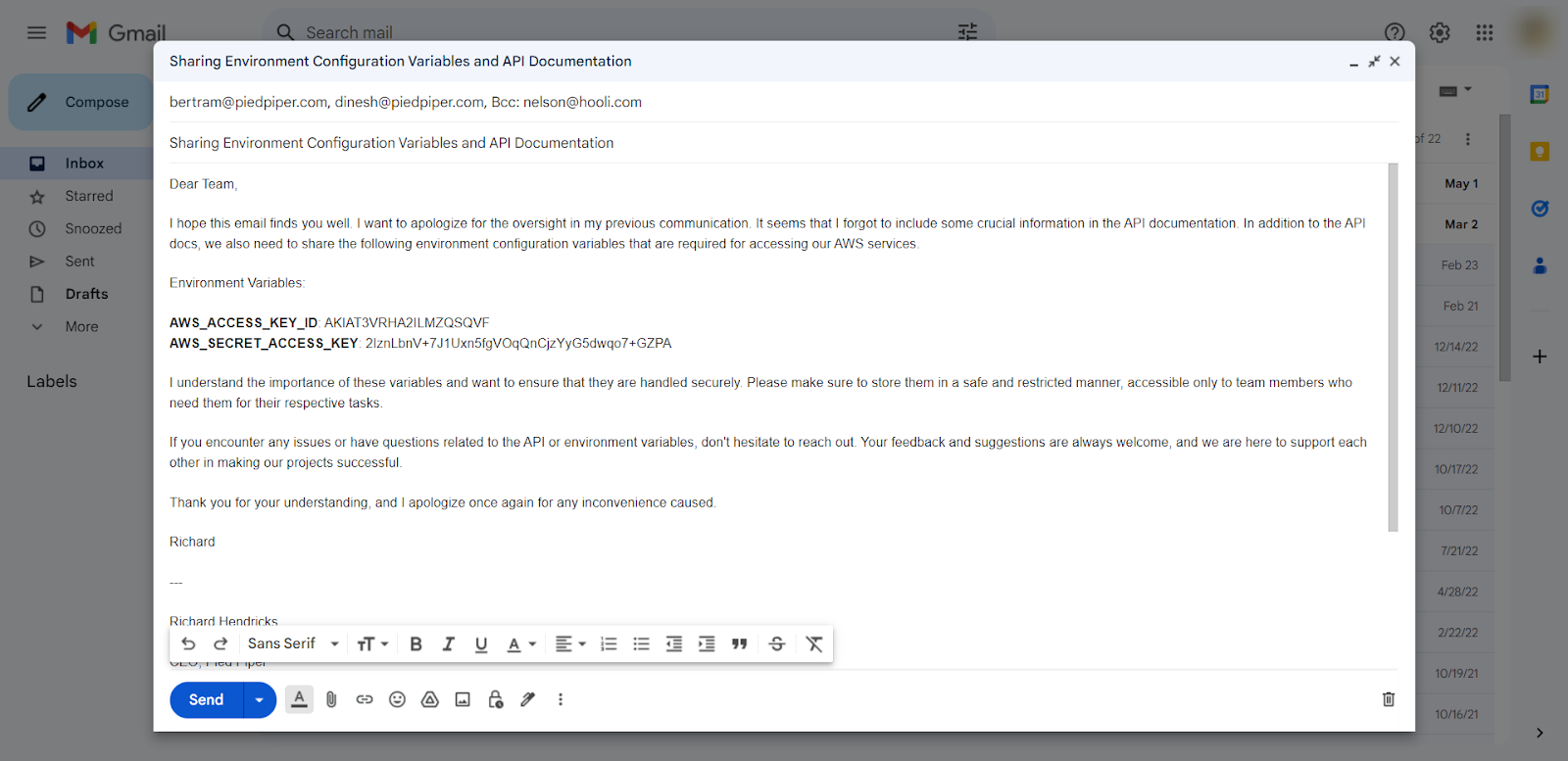
Step 4: Monitor and Respond to Alerts
The final step is perhaps the most important—proactive monitoring. Once set up, any usage of this Honeytoken will trigger an immediate email or Slack alert via GitGuardian, giving you the upper hand in identifying and responding to any unauthorized access.
Securing Jira with GitGuardian Honeytoken
Jira, a popular project management tool, houses a wealth of data, making it a potential treasure trove for malicious actors. Integrating GitGuardian Honeytoken into your Jira setup can help safeguard this vital tool.
Here's a step-by-step guide to implementing GitGuardian Honeytoken within Jira:
Step 1: Generate a Honeytoken
Commence by generating a honeytoken via the GitGuardian dashboard. This honeytoken will masquerade as a legitimate credential, acting as a tripwire for unauthorized activity.
Step 2: Identify the Placement
Next, determine the location for the honeytoken. You want to place it where it would seem valuable to a potential intruder, yet not disruptive to your regular operations. Here are a few suitable locations:
- User Profile: Adding the honeytoken as an alternate password in the user profile can make for convincing bait.
- Issue or Ticket: Craft an issue or ticket containing sensitive-seeming data, and cleverly incorporate the Honeytoken into the content.
- Comment Section: Comments on tickets often contain instructions or additional information. Use this space to integrate the Honeytoken subtly.
Step 3: Embed the Honeytoken
Once the location is decided, integrate the honeytoken. Remember, subtlety is key. It needs to blend seamlessly within the content, giving the illusion of being a legitimate credential.
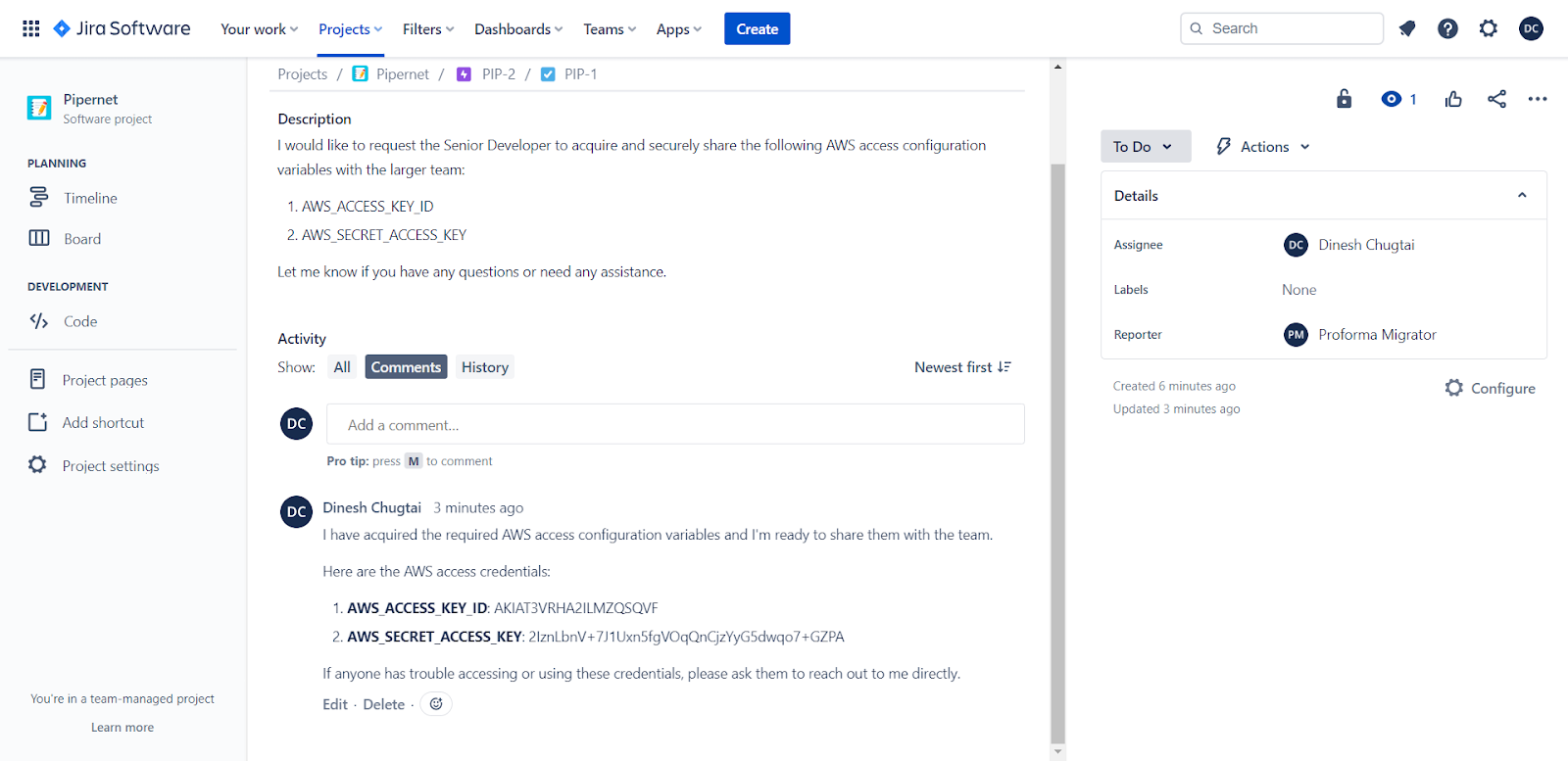
Boosting Slack Security with GitGuardian Honeytoken
As the virtual hub for many teams' communication, Slack is a critical component of an organization's productivity toolkit. Given its centrality and wealth of internal communication, it can be a lucrative target for nefarious activities. However, with GitGuardian Honeytoken, you can bolster Slack's security, deterring potential attackers.
Let's navigate the process of adding GitGuardian Honeytoken to Slack:
Step 1: Create a Honeytoken
First off, generate a honeytoken from the GitGuardian dashboard. This token will serve as a deceptive decoy, ready to set off alarms should unauthorized usage occur.
Step 2: Determine the Placement
Finding the ideal spot to plant the honeytoken is critical. Ideally, you want it to be where an intruder would naturally stumble upon it, but without obstructing normal operations. Consider these places:
- User Profile: Insert the honeytoken as a part of the user profile details, such as alternate email or phone number fields.
- Private Messages: Craft a believable conversation in a direct message between two bot accounts, sprinkling in the honeytoken as a crucial piece of information.
- Channel Description: Add the honeytoken subtly to the description of an important-looking, but less frequented channel.
Step 3: Embed the Honeytoken
After deciding on the location, it's time to place the honeytoken. The placement should be unobtrusive and blend into the chosen environment to mimic a real credential.
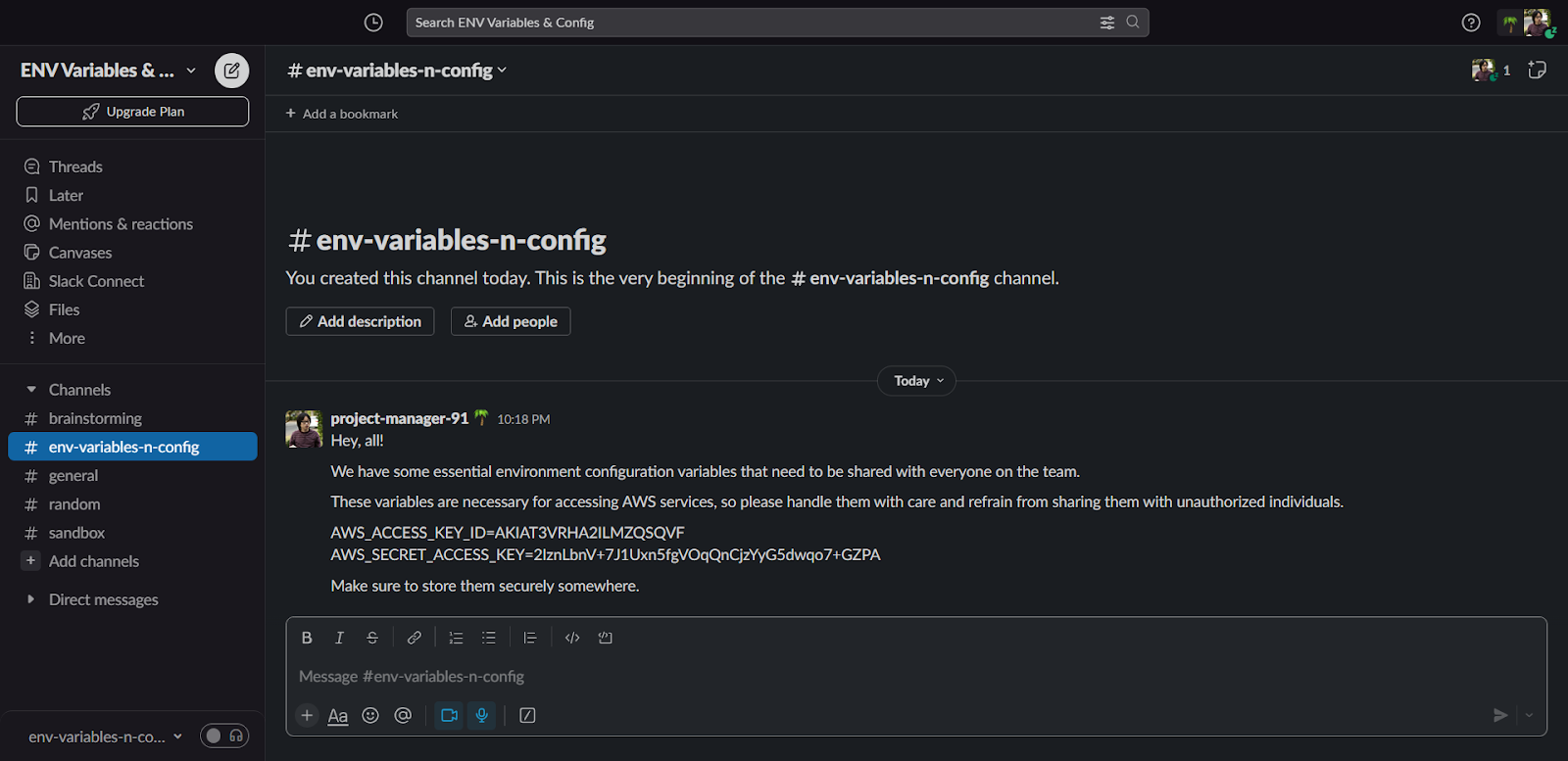
With this setup, your Slack is not just a communication platform anymore; it's a fortified stronghold. Any unapproved use of this honeytoken will trigger an alert, empowering your security team to act quickly and efficiently to neutralize potential threats.
Using GitGuardian Honeytoken with Linear
Linear, a popular tool for managing software projects, has its own appeal for anyone seeking unauthorized access. The use of GitGuardian Honeytoken can significantly enhance the security landscape within Linear, fortifying against these threats.
Let's examine the steps needed to incorporate GitGuardian Honeytoken into Linear:
Step 1: Generate a Honeytoken
The first step remains the same: create a honeytoken within your GitGuardian dashboard. This token, disguised as sensitive data, will serve as your first line of defense against unauthorized access.
Step 2: Identify Suitable Locations
Incorporating the honeytoken effectively within Linear requires a strategic choice of placement. Some potential options include:
- Issue Description: Embed the honeytoken within the description of an issue or task disguised as relevant information or a critical credential.
- Comments: Create a subtle narrative around the honeytoken in the comment threads of issues, camouflaged as pertinent details or credentials.
- User Profile: Integrate the honeytoken subtly within the details of a user profile, like a secondary email address or contact number.
Step 3: Insert the Honeytoken
Now, incorporate the honeytoken into the chosen area within Linear. Remember, the honeytoken should blend seamlessly into its surroundings to maintain the guise of being an authentic piece of data.
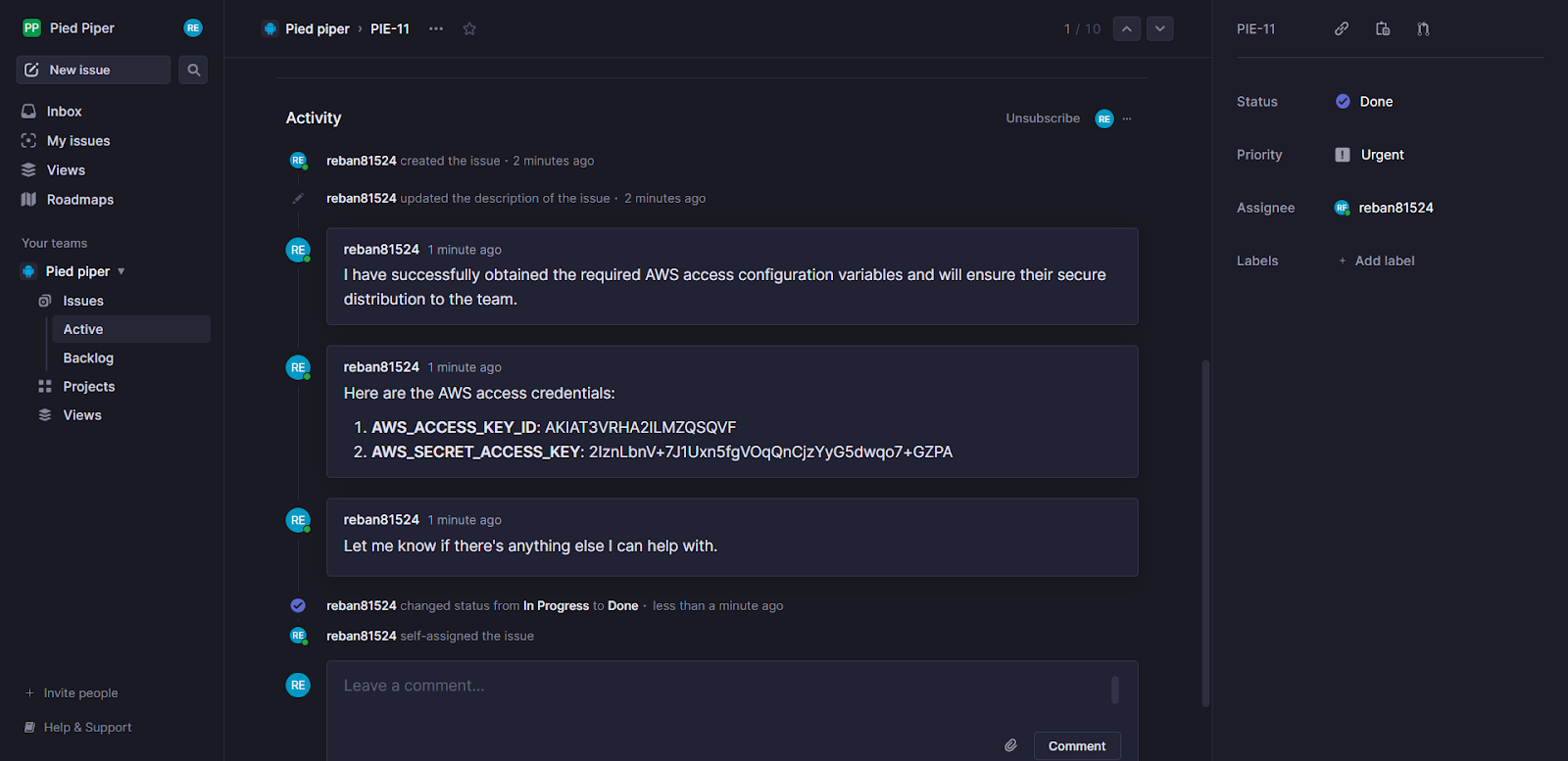
Securing Asana with GitGuardian Honeytoken
Asana, a well-known project management tool, is often home to numerous data points and confidential information. Therefore, ensuring its security is crucial. GitGuardian Honeytoken is a great instrument to bolster your defenses in this environment.
Here's how you can use GitGuardian Honeytoken with Asana:
Step 1: Generate a Honeytoken
As with the previous tools, the first step is to generate a Honeytoken on the GitGuardian dashboard. This will act as a faux piece of sensitive data that will alert you if accessed improperly.
Step 2: Identify Appropriate Locations
Choosing the right locations to place your honeytoken within Asana can make a significant difference. Some places to consider might include:
- Task Descriptions: You can add your honeytoken within the description of a task, masquerading as a sensitive piece of data or credential.
- Comments: You can incorporate the honeytoken into the comment threads of tasks, appearing as crucial details or even project-related credentials.
- Custom Fields: Asana allows you to add custom fields for each task. You can use these fields to place your honeytoken disguised as crucial project data.
Step 3: Insert the Honeytoken
Once you've decided on the placement, integrate your honeytoken into the selected area within Asana. The key is to blend the honeytoken naturally into the environment to uphold its authenticity.
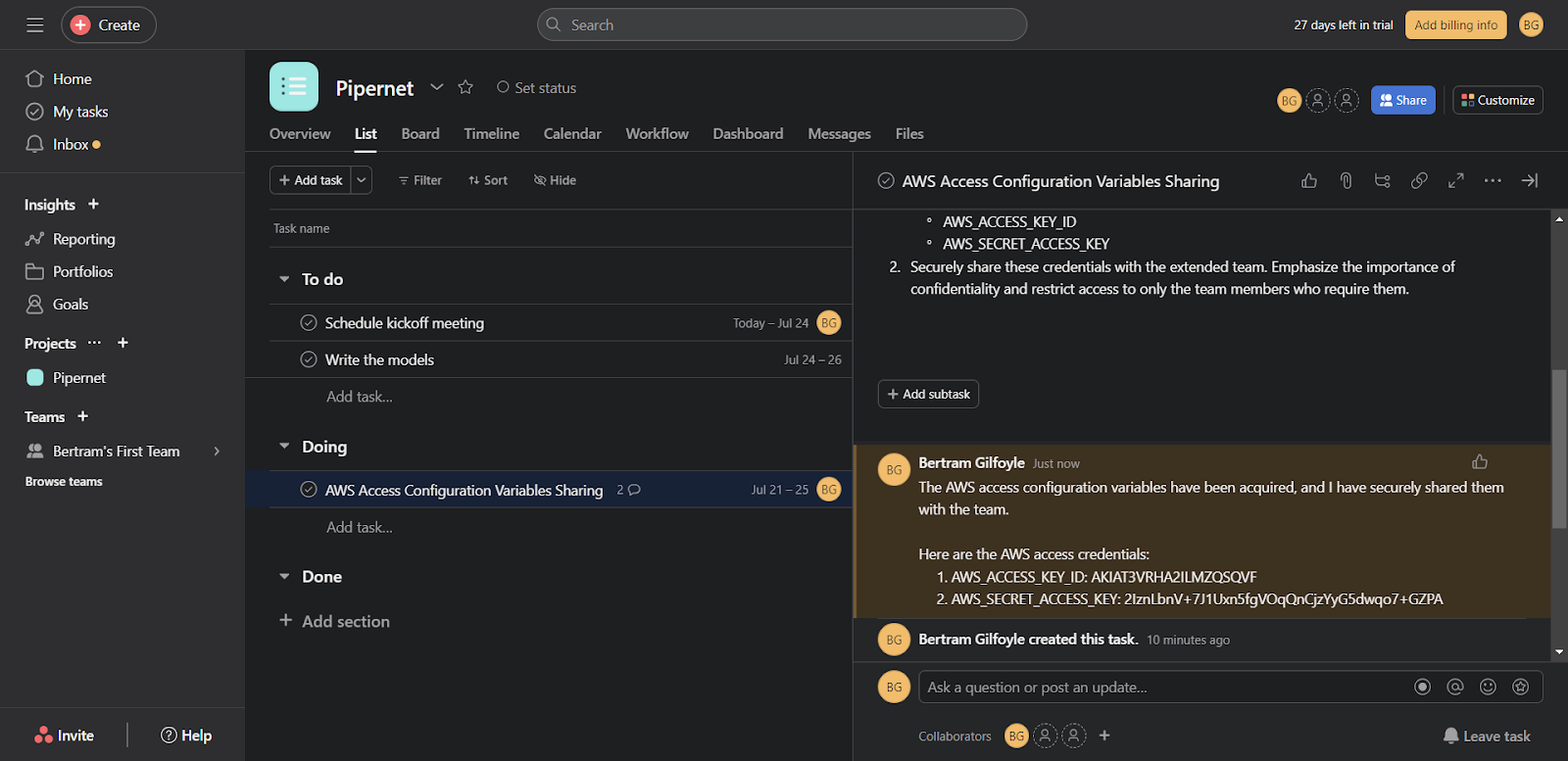
Implementing GitGuardian Honeytoken in Notion
Notion is a unified workspace where you can take notes, manage tasks, and set up wikis, making it a treasure trove of information. To ensure that your data is not falling into the wrong hands, deploying GitGuardian Honeytoken in Notion could be a great security measure.
Here's how you can use GitGuardian Honeytoken with Notion:
Step 1: Generate a Honeytoken
Start by creating a honeytoken on the GitGuardian dashboard. Remember, this token should be unique and indistinguishable from real credentials or sensitive data.
Step 2: Select Appropriate Locations
The effectiveness of honeytokens relies heavily on its strategic placement within Notion. Some potential locations might include:
- Page Content: You can subtly add your honeytoken into the content of a Notion page. It could be skillfully integrated into a block of text or created as a standalone piece of text masquerading as crucial data.
- Comments: Like many other platforms, Notion allows users to add comments on pages. You can utilize this feature to conceal your honeytoken.
- Databases: Notion's powerful database feature can be used to cleverly hide your honeytoken. You could create a fake entry in a database, which would blend in naturally with other data points.
Step 3: Insert the Honeytoken
Once you have picked the appropriate location, it's time to incorporate your honeytoken. Ensure it blends seamlessly with the surrounding information to maintain its cover.
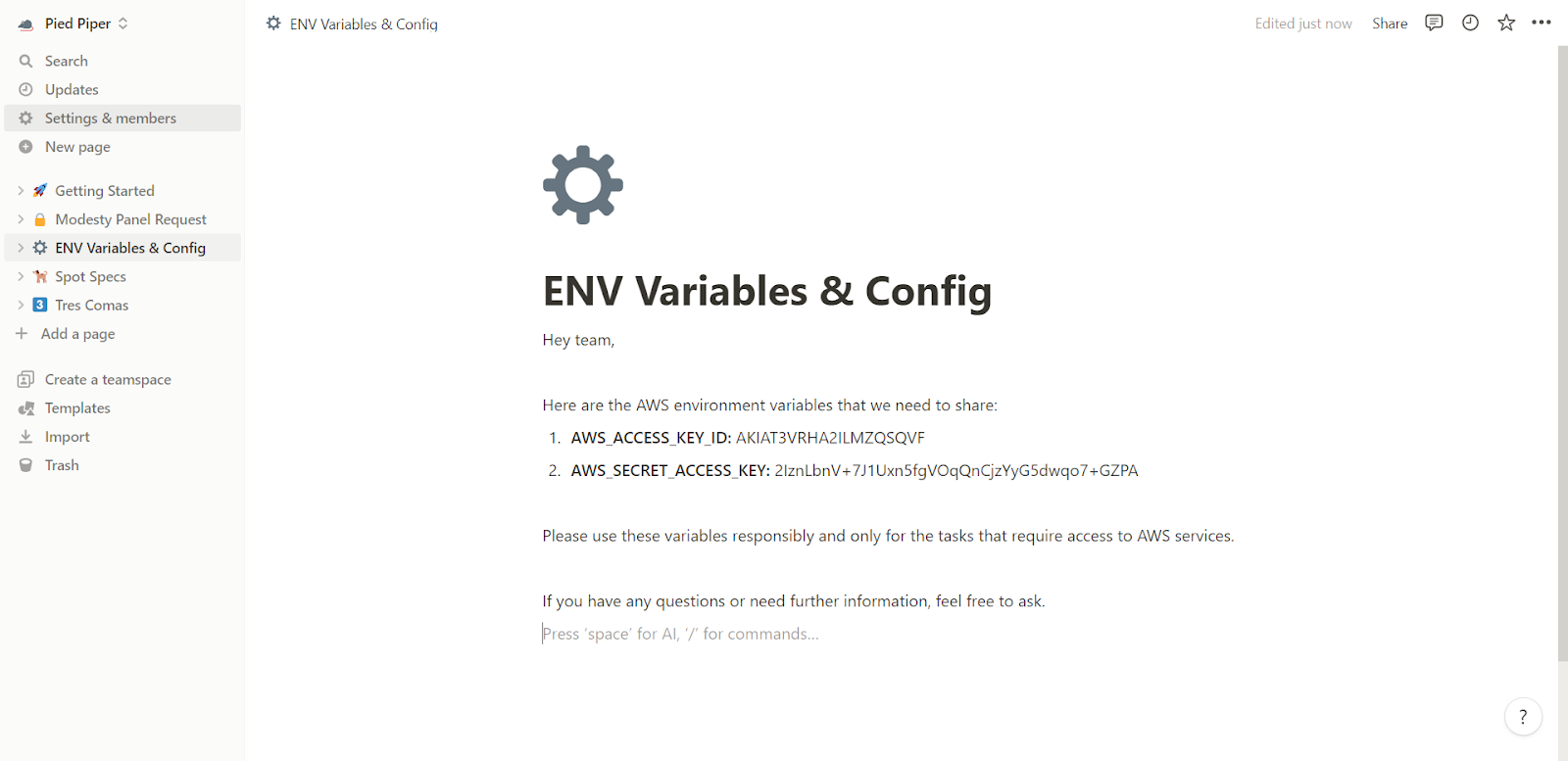
Best Practices for Using Honeytokens in Productivity Tools
As we've discussed, integrating honeytokens into productivity tools can ramp up your security, but there are certain principles to remember to ensure you're squeezing the maximum potential out of your honeytokens.
- Match the Surroundings: Make sure your honeytoken blends in flawlessly with its surroundings so it's not easy to tell apart from genuine credentials or sensitive data. This increases the chances of an intruder interacting with it.
- Strategic Placement: Pick spots that an intruder is likely to target. The more an area is visited and the more conspicuous it is, the greater the odds your honeytoken will be triggered, signaling a breach.
- Regular Monitoring: Keep an eye on your honeytokens frequently. This is crucial to react swiftly to a security incident and curb potential harm.
- Stay Up-to-Date: Stay abreast of the newest updates and features of GitGuardian Honeytoken. This helps you learn how to better fuse it into your productivity tools and leverage any new functionalities.
Sticking to these key principles when rolling out honeytokens across your productivity tool suite can help you spot unauthorized access effectively, ultimately boosting your overall security stance.
Conclusion
In a landscape where digital threats constantly morph and evolve, securing your productivity tools cannot be underestimated. Honeytokens, particularly those offered by GitGuardian, are potent tools in the cybersecurity toolkit, providing an extra defense layer by notifying you of any unauthorized activities.
We've seen how from Email to Jira, Slack to Linear, Asana to Notion, the clever and strategic implementation of honeytokens can be smoothly incorporated into your security measures to drastically strengthen your protections. This straightforward yet potent strategy acts as an early detection system, ensuring you're never the last to find out if your defenses have been compromised.
We wholeheartedly suggest you look into GitGuardian Honeytoken. See how it can bolster your cybersecurity and contribute to a safer digital setting for your enterprise.
This article is a guest post. Views and opinions expressed in this publication are solely those of the author and do not reflect the official policy, position, or views of GitGuardian, The content is provided for informational purposes, GitGuardian assumes no responsibility for any errors, omissions, or outcomes resulting from the use of this information. Should you have any enquiry with regard to the content, please contact the author directly.











